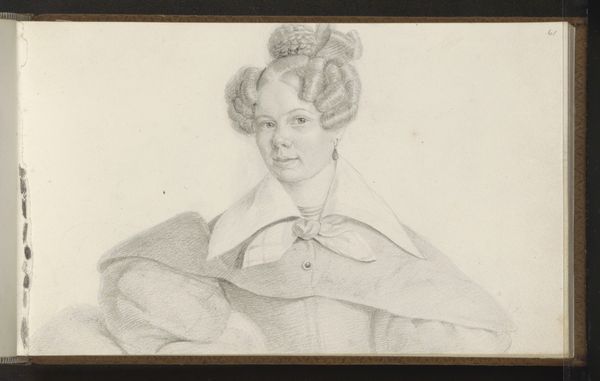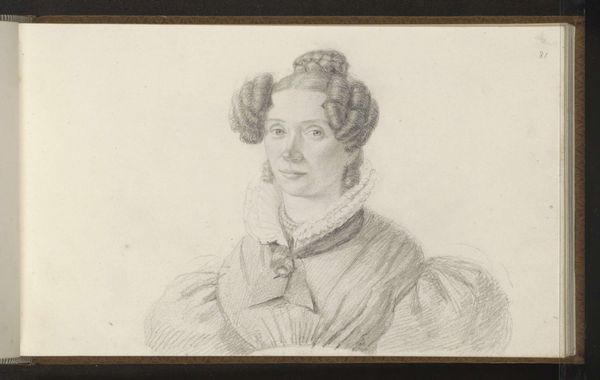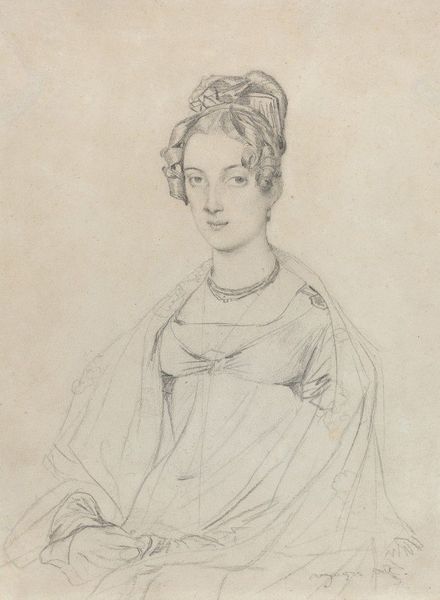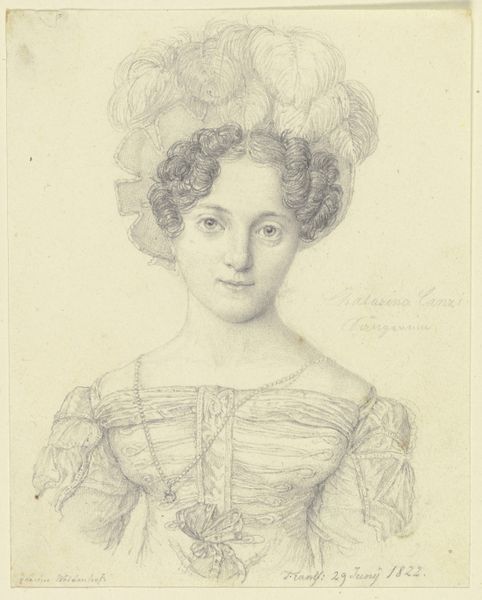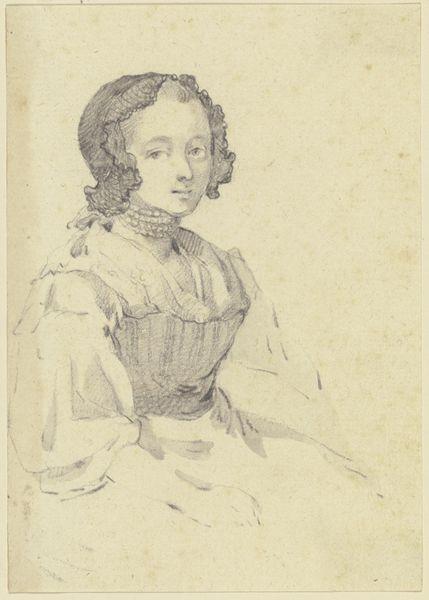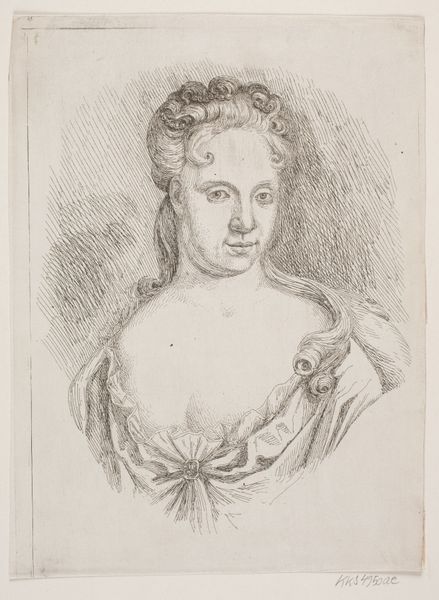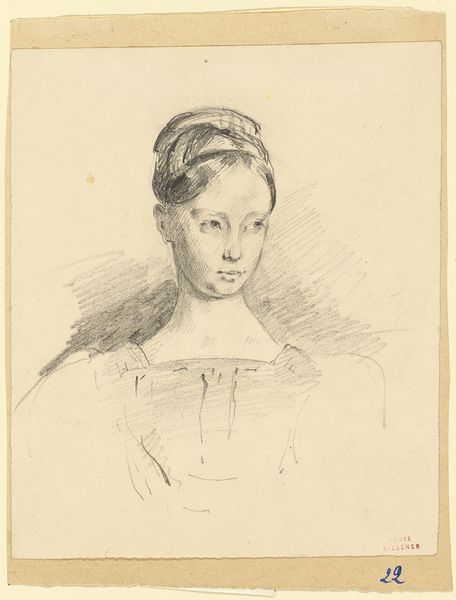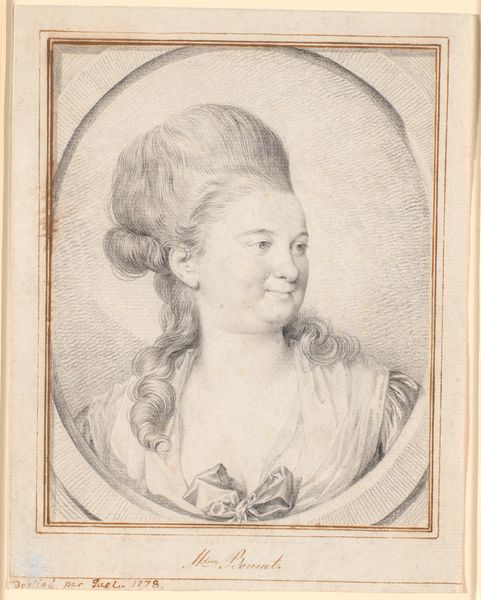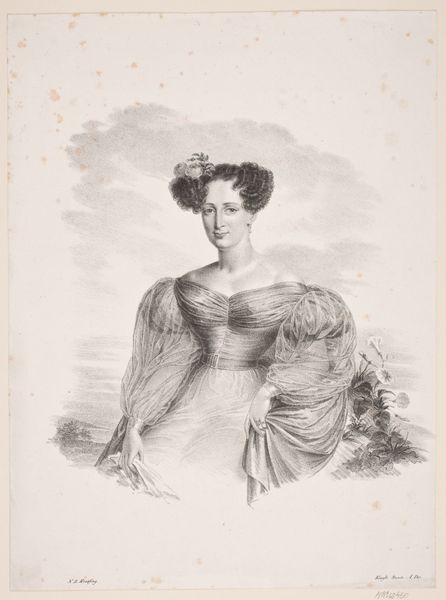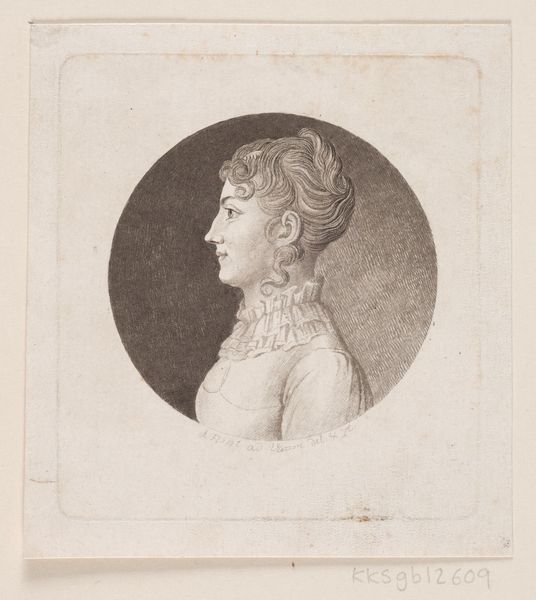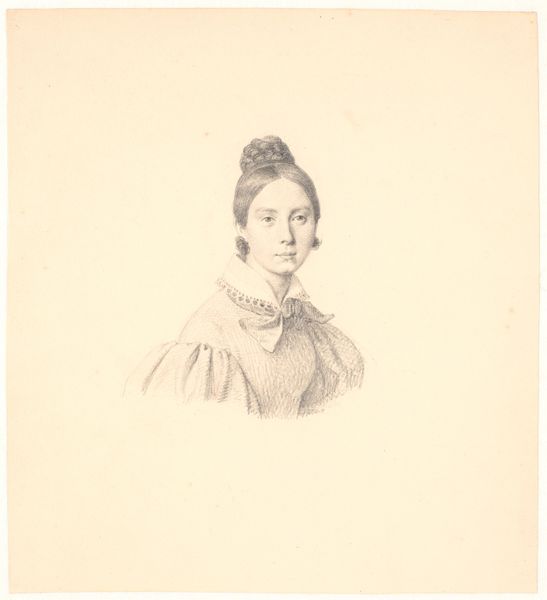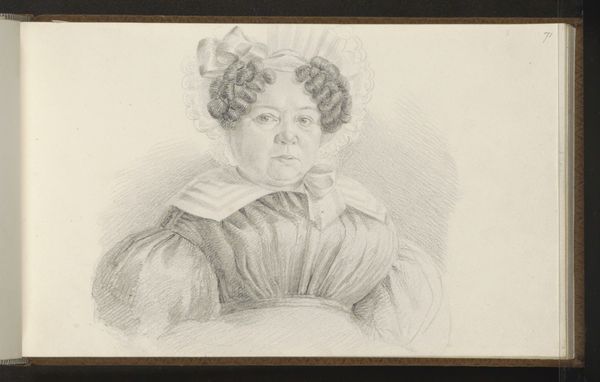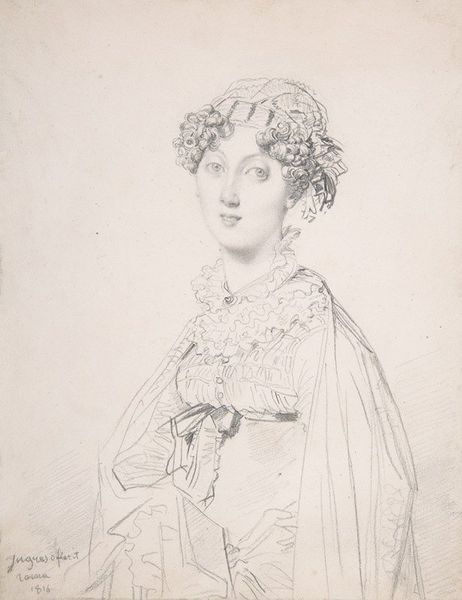
drawing, pencil
#
portrait
#
drawing
#
pencil drawing
#
romanticism
#
pencil
Copyright: Rijks Museum: Open Domain
Editor: Here we have a delicate pencil drawing titled "Portret van een vrouw" created circa 1834-1844 by Christian Heinrich Gottlieb Steuerwald. The woman’s clothing and hairstyle really grab your attention! What stands out to you about this piece? Curator: Immediately, the pencil strokes reveal the artist's process. This wasn't about illusionism but about labor. We must think about the graphite itself: mined, processed, sold as a commodity. The very act of sketching becomes tied to 19th century modes of production, doesn’t it? Editor: Definitely, viewing pencil as a "commodity" provides an insightful, even blunt analysis. The texture looks smooth, so, would the kind of paper be equally as important? Curator: Absolutely! The smooth paper—likely manufactured, hinting again at industrial processes—allows for that precise detailing in her clothing. Notice the intense focus on depicting fabric – the puffed sleeves, the collar. Are we seeing a fascination, even an obsession, with material wealth and its construction here? Editor: That’s interesting, focusing on the economics behind what she is wearing and its relation to production rather than thinking about it purely in terms of fashion. Curator: And, by extension, considering who profits from that production! Remember, romanticism, while seemingly focused on individual emotion, occurred amidst massive social and economic upheaval. Steuerwald’s portrait becomes a record, intentional or not, of those power dynamics visualized. Editor: Thinking about the means of production really changes how I look at it. It's much more complex than just a pretty portrait. Curator: Indeed. By interrogating the materials, labor, and implied social context, we see beyond mere representation.
Comments
No comments
Be the first to comment and join the conversation on the ultimate creative platform.
